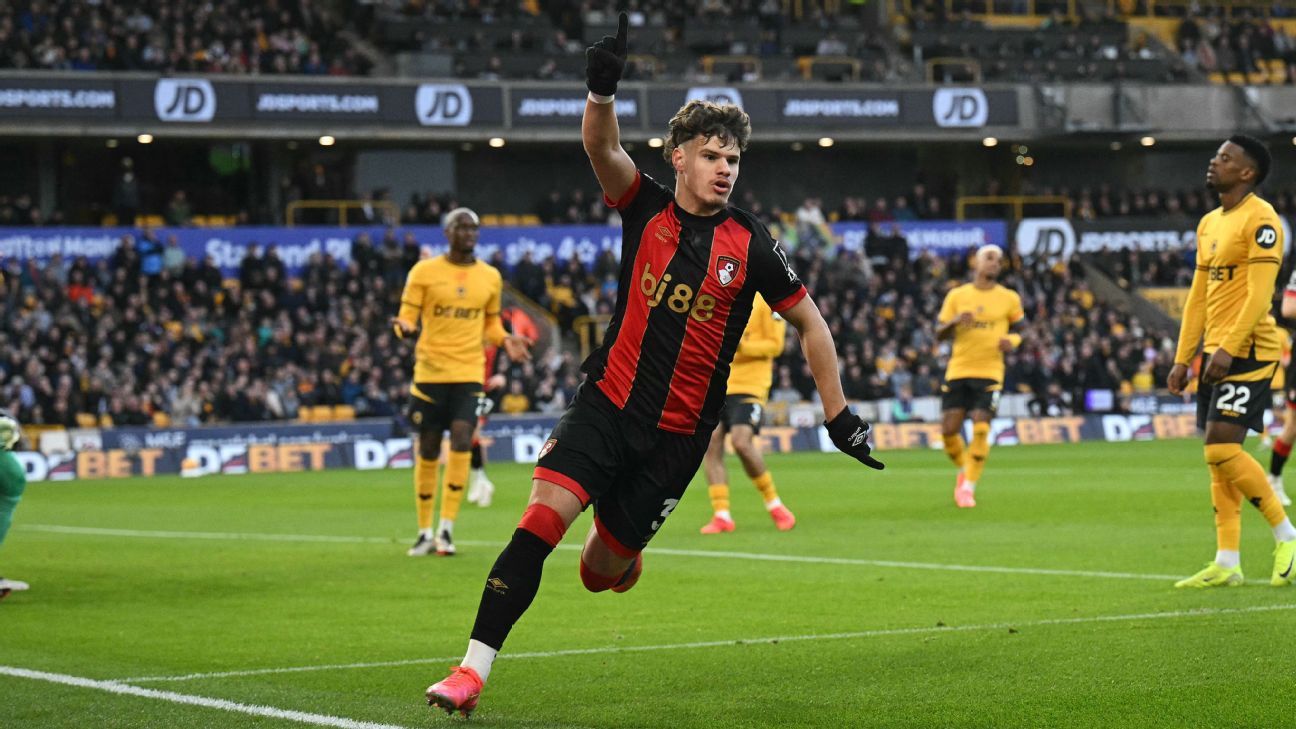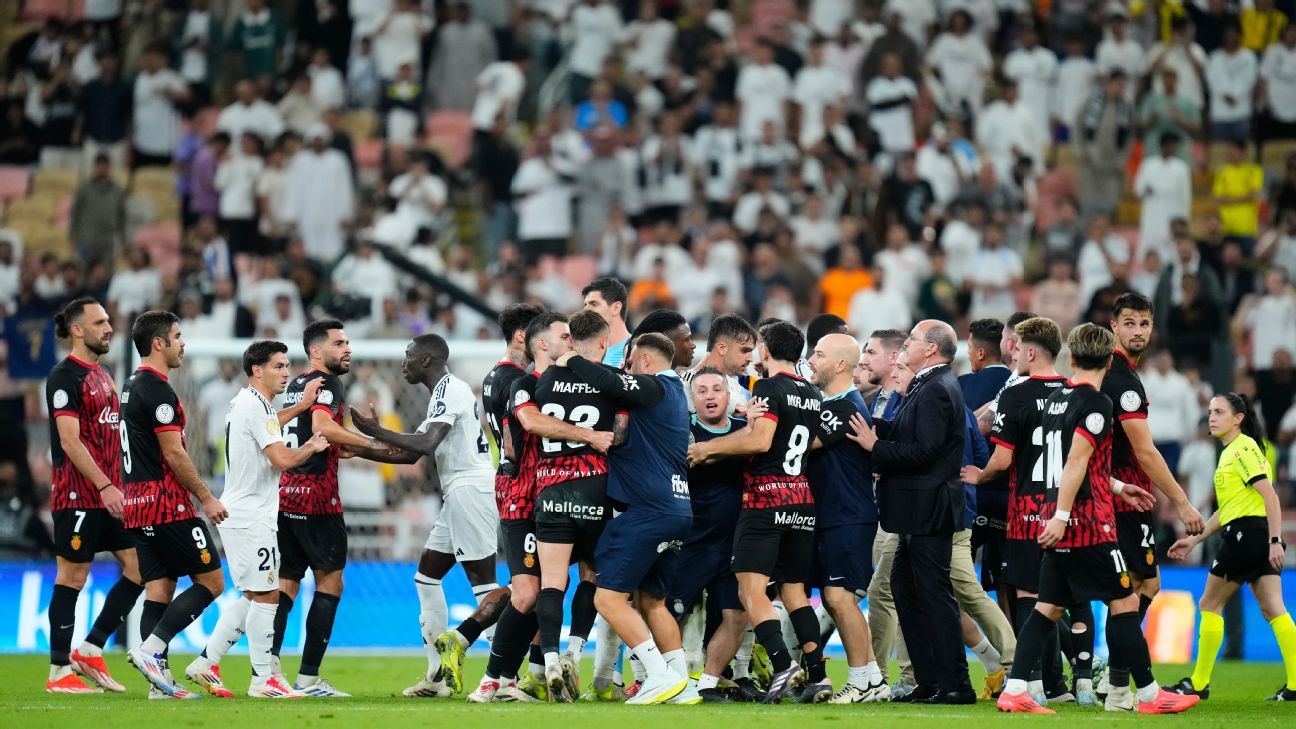Jon Arnold
Jul 9, 2024, 01:47 PM
These days, it's familiar to most soccer fans. In addition to players carrying a Dopp kit as they get off the bus, someone is carrying a thermos and a cup with a fancy design. Maté is mainstream. There's even an emoji, added to keyboards in 2019.
But it's more than just carrying around a gourd and sipping tea. The process of making and drinking maté involves a ritual, one that makes a player pause and reflect. It also is best performed in a group, making it a perfect secondary activity to enjoy while chatting after training or killing time during a tournament run.
Two of the favorites to win Copa América -- Argentina and Uruguay -- often are seen enjoying maté after a match, during down time between training sessions or when speaking to the press during media availabilities.
"In Rio de la Plata -- Uruguay and Argentina, and I think we can include Paraguay but it's more tereré and not hot maté -- it's a custom. In Uruguay, I think it's more about having the thermos and maté out and about," Santi Rodriguez, New York City FC's Uruguayan forward, told ESPN. "Now, I think it's more famous because soccer players come off the bus with the thermos or are drinking it at training, so it's gotten more known. But in Uruguay, drinking maté always has been part of the culture."
At many offices in Argentina and Uruguay, one colleague is designated as the one who prepares the maté for the day. That tradition extends to the soccer workplace as well.
So how do you make it? You can't simply toss the tea leaves into the drinking vessel and plunge in a straw. The ideal preparation involves filling a gourd -- usually a bulbous, intricately designed vessel -- about halfway with bitter-tasting Yerba maté. A couple of shakes with the hand over the cup free the dust that may have settled.
From there, something of a mountain needs to be made on one side of the vessel with hot water poured into the other side until it begins to fill. The special metal straw -- the bombilla -- is inserted with a finger over the opening to prevent oxygen from entering. Generally, the first pull is the most bitter and is spit out: in addition to the taste, maté also is highly caffeinated and also includes antioxidants and can help with inflammation.
After this meticulous preparation, hot water is continually added to the top. When the drink is being enjoyed communally one drinker typically finishes all the water before new hot water from a thermos or kettle is added and another maté is ready for the next drinker in line to sip.
Uruguayans are more likely to be solo drinkers than Argentines, one reason you're likely to spot Luis Suárez with the full thermos after a match whereas an Argentina team member may have a full kit designed to serve multiple teammates.
"I personally don't like to make the maté. Carrying it around is a bit of a load on my shoulders and I don't like to do it, but I love to share it when a teammate brings it," Uruguay goalkeeper Franco Israel said before La Celeste's Copa América match against the United States. "I love to share with them. It brings us Uruguayans community."
The bond between teammates is one of the most unifying aspects of maté. It's something to do while sitting around and encourages conversation. The barrier to entry is relatively low, with most everyone from the region knowing how to prepare maté.
That's why so many players cite drinking maté when asked about their favorite activity away from soccer. It's not that the tea itself is that good; it's how the drink can foment connection and community.
"Maté makes friendships," Austin FC attacker Sebastián Driussi told ESPN, but it's not something that must be done together. Like going to a movie or taking a road trip, sometimes drinking maté can be best enjoyed alone.
"I can drink maté all day, and maté fills you up to," Driussi continued. "It's something psychological but maté -- whenever I can, I always drink it. Maté is very good. It's not that I say: 'I drink maté and now I play very well' No, maté doesn't do that to you."
Or does it?
A 2022 Brazilian study published in the journal "Sports Medicine - Open" found that cyclists who hadn't eaten but who had sipped Yerba maté were able to perform better than those who hadn't thanks to an increase in fatty acid oxidation. When maté was consumed with a meal, those effects were more difficult to find.
The effect is unlikely to be seen in professional soccer players, who typically get a proper meal before a match, but it's worth noting that unlike other substances players may be ingesting before or after a game, maté may bring some on-field benefits, if only helping players feel like they're in their typical pre-match routine no matter where they may actually be.
"I'm so used to drinking maté that if I don't drink it, I feel like I'm missing something, you know?" Philadelphia Union forward Julián Carranza said. "But it's not anything that benefits me or harms me. It's just like having a coffee here in the U.S. where if you get together to chat or to hang out, you drink maté. Maté is for everything."
While getting out the thermos and passing a drink around may be leading to team bonding in the Argentina and Uruguay camps, it also can bring a connection to home for players who the sport has taken long distances from the family and friends they'd sip maté with back in Buenos Aires, Rosario or Montevideo.
"Maté has become a companion of mine," said Hernan Lopez, the Argentine playmaker who came to the U.S. this spring to join the San Jose Earthquakes. "Sometimes I'm alone for a few hours, I drink maté and that takes you back to your country. I feel like I'm in Argentina even if I'm far -- at the club, at my house I drink maté and go back a bit to my roots."
That connection is what makes maté so special for players who leave South America to head to clubs in other regions where they can earn more money and reach new heights professionally. It's an easy way to feel comfortable, to have a piece of home come back.
Lionel Messi or Suarez or even Antoine Griezmann, who converted after being introduced to the drink by South American teammates at Real Sociedad, never set out to make maté famous. They just drink maté because they like how they feel and like the people they spend time with while they drink it.
Maté may be mainstream now, but to many of the players chasing the Copa América and others in MLS it's a cultural touchstone with an importance that stretches back before emojis and before the world was used to seeing players enter stadiums carrying their thermos.
 (1).png)
 6 months ago
20
6 months ago
20


















